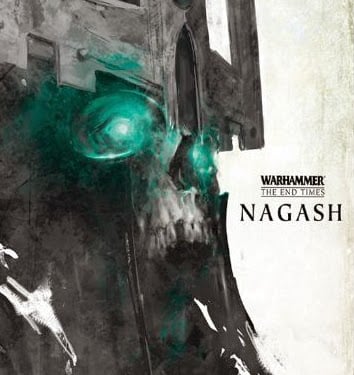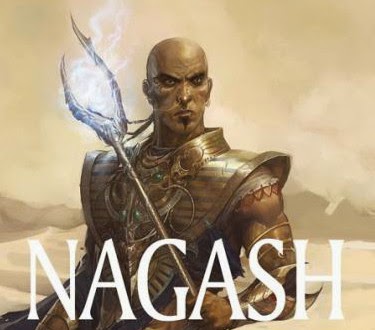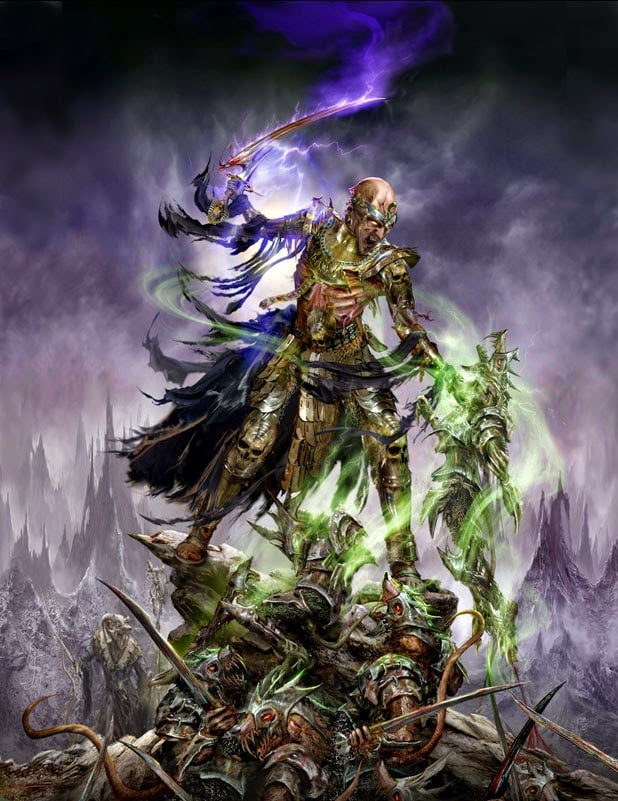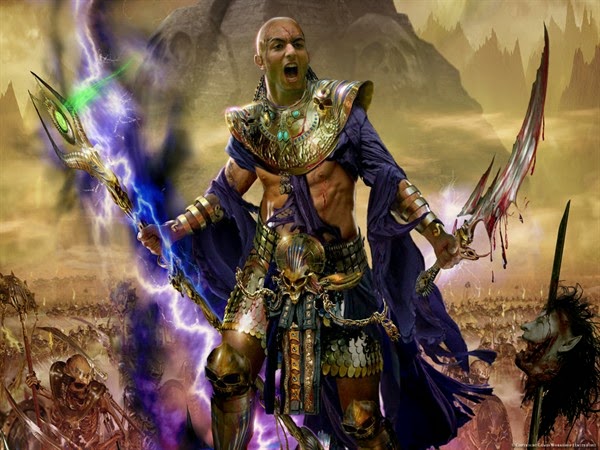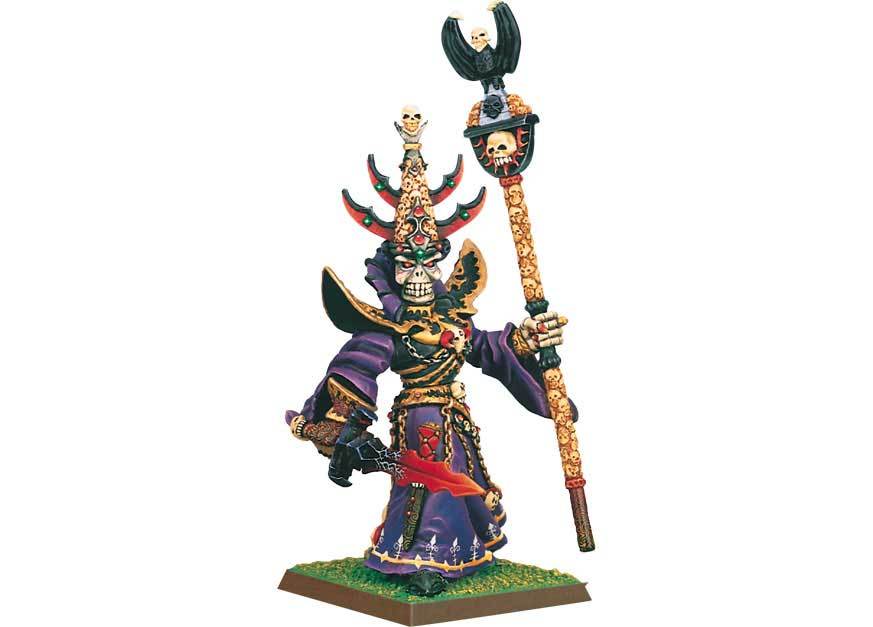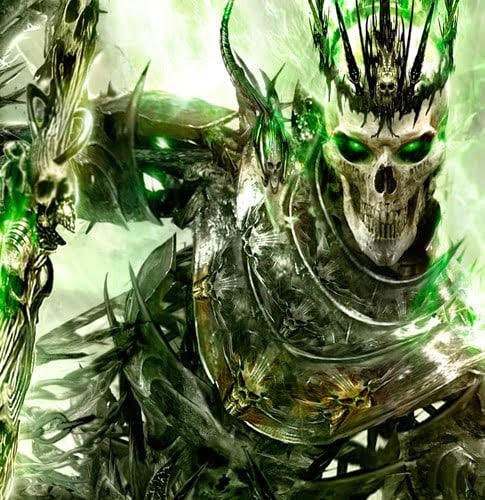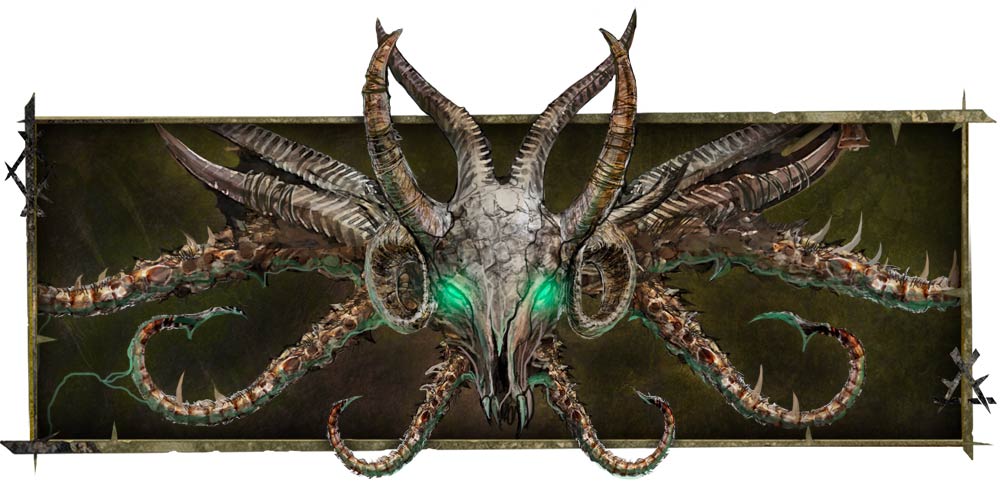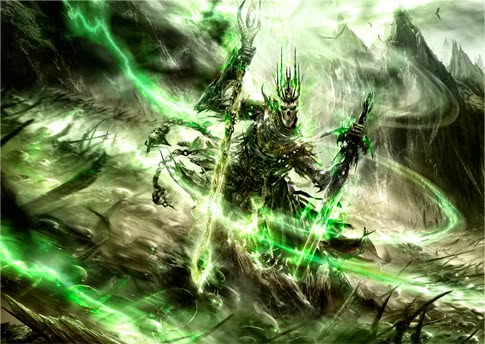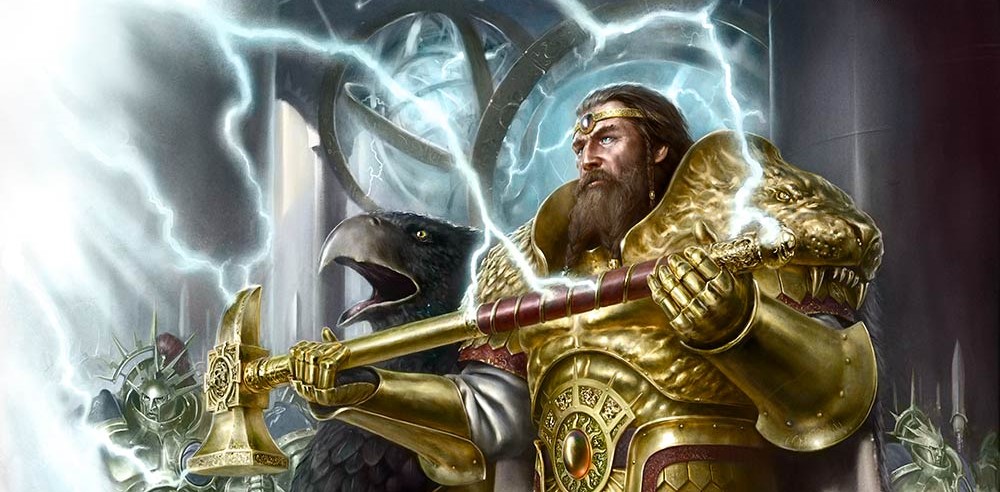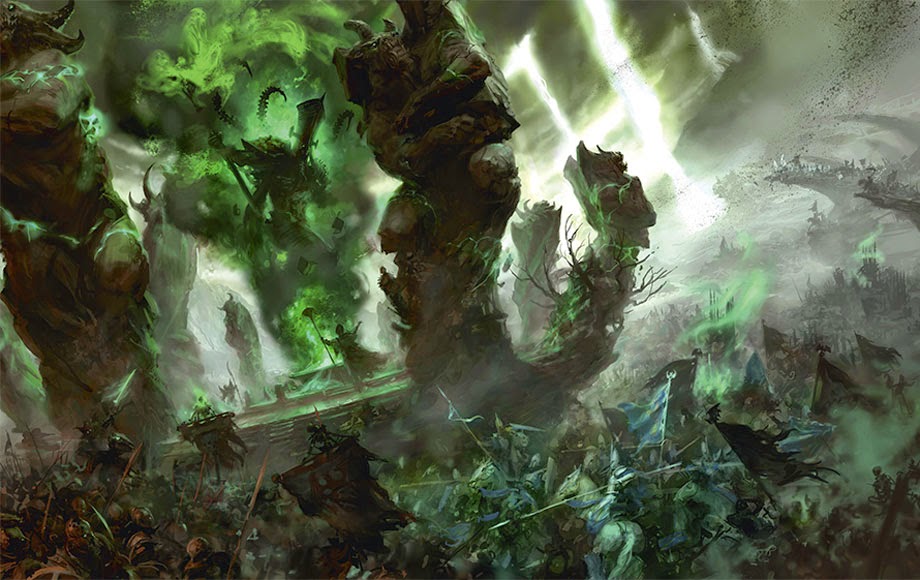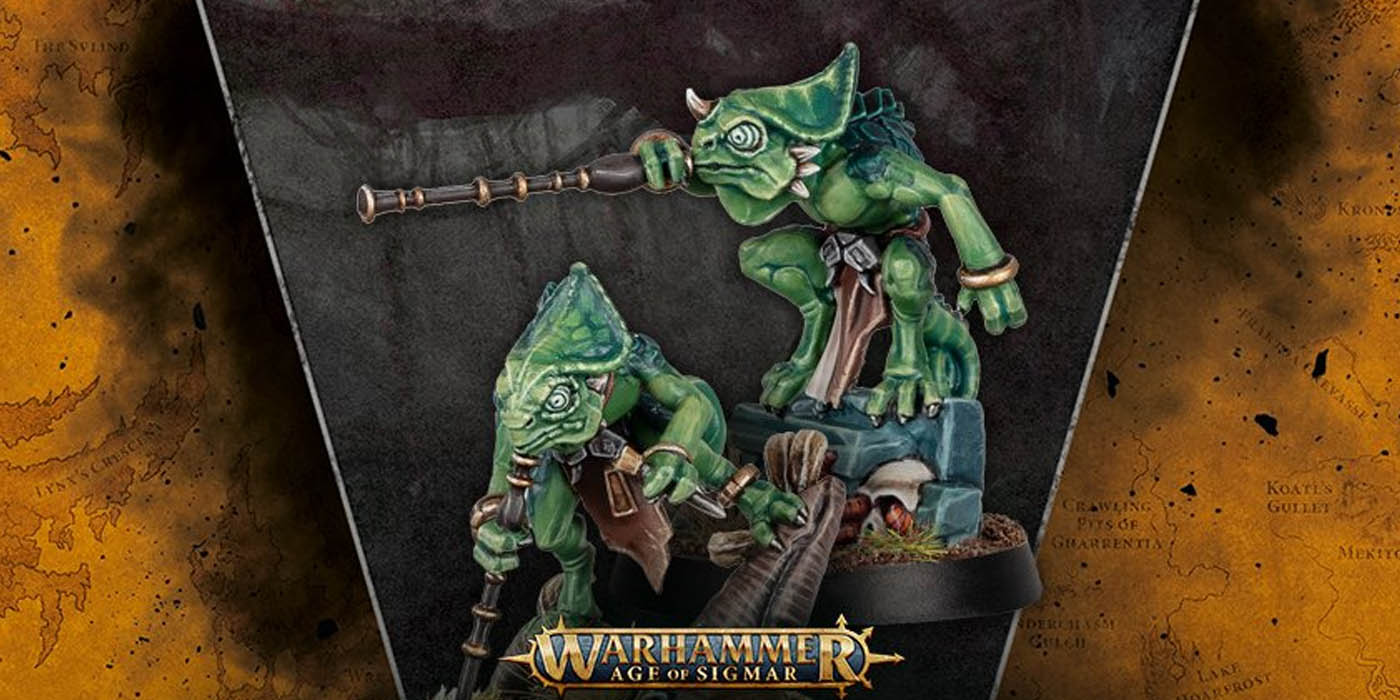Warhammer: The Old World – Nagash, God Of Death
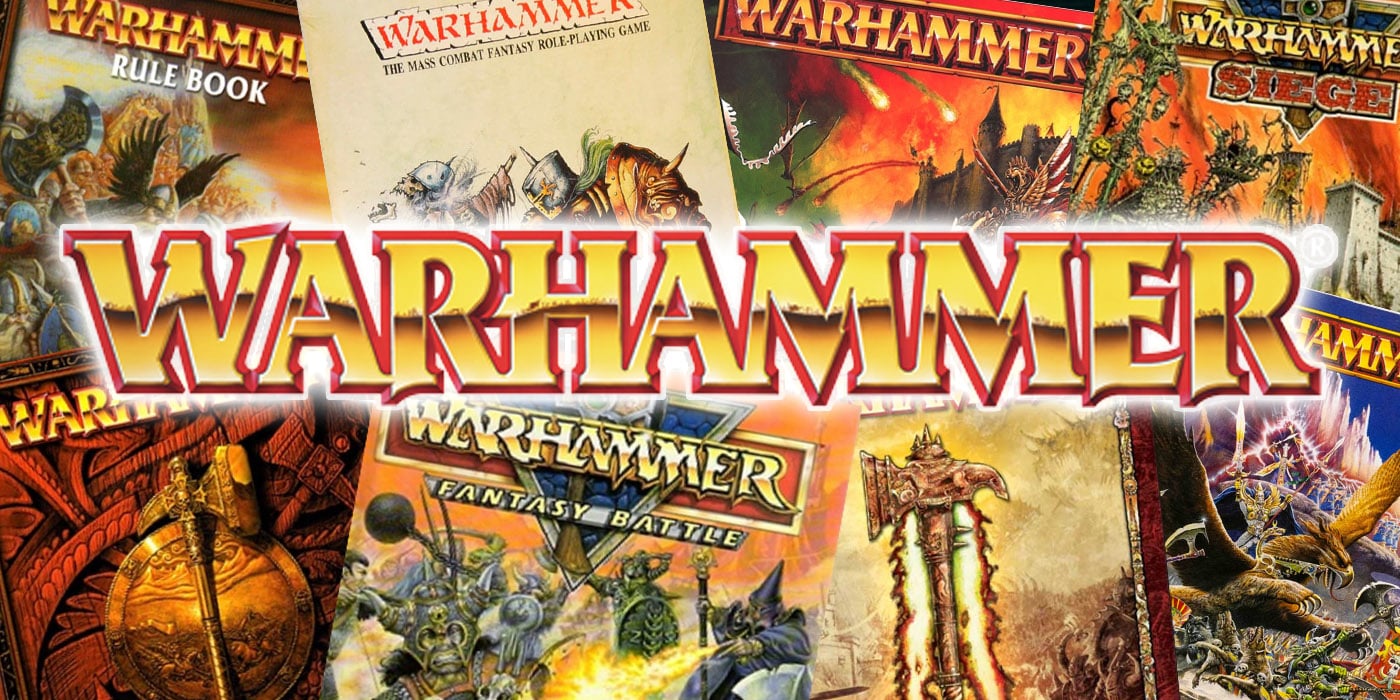
Loremasters, today we delve into the history of Nagash who was once a mortal and who became the god of death.
Nagash is the first necromancer and Lich, one of the most powerful mages of all time. He caused the destruction of the civilization of Nehekhara and created the Undead. He became the Incarnate of Shyish during the End Times. He now is the self-proclaimed ruling god of the Realm of Shyish of the Mortal Realms and the god of death of Sigmar‘s Pantheon.
But he wasn’t always the God of Death. This is the history of the Great Necromancer from the Old World.
Early Life
Nagash was the firstborn son of King Khetep of Khemri. He joined the Nehekharan Mortuary Cult and quickly rose to become High Priest. Like all Mortuary Priests, he was searching for a means of achieving immortality. But despite his exalted rank of High Priest, he coveted even greater power.
Though Nagash was already well versed in the magical embalming arts of Nehekhara, it is said that a group of Dark Elf captives proved essential to his quest for immortality. One among their number was a sorceress, and she grudgingly revealed some of her magical knowledge to the High Priest of Khemri.
Nagash learned of the Chaos Gate in the far north and the Winds of Magic that blew from it, and how they may be harnessed by a careful practitioner. Unlike the sorceries of Khemri, which relied on the intercession of gods, Nagash learned that mortals could manipulate magic for themselves. Under the tutelage of the Dark Elves he discovered how to harness a victim’s pain to power spells, unlocking a branch of dark magic previously unknown to humanity.
The sorceress and her companions made ceaseless efforts to escape from their prison over the years, and eventually Nagash gained enough power through his own necromantic experiments to confront them. Though wounded in the resulting magical duel, Nagash succeeded in overcoming and killing all three dark elves.
Nagash Becomes King
After the death of their father, Nagash’s brother Thutep took to the throne, becoming the ruler of Khemri. But Nagash was now determined to try a bid for absolute power.
One night, as clouds covered the sky, Nagash usurped his own brother, burying him alive in their father’s tomb. The next morning, Nagash claimed the throne of Khemri for himself. As there was none other to gainsay him, the ascension was not contested. Soon after, the city of Zandri rose against Nagash, but he used the River Vitae to bypass their army and brutally sacked Zandri itself, an unprecedented tactic in the ordered warfare of Nehekhara. The forces of Khemri then caught the Zandri army in a trap, utterly defeating them and cementing Nagash’s tyrannical rule. It was on the eve of that battle that Nagash first discovered how to create the Elixir of Life.
Nagash ruled Khemri with fear, and gathered around him a coterie of dissolute nobles who acted as underlings and co-conspirators in his necromantic experiments, chief among them Arkhan the Black. He forced countless slaves to labour for fifty years to build the greatest pyramid in Khemri from black stone, an edifice which would come to be known as the Black Pyramid of Nagash. On the day it was completed, the elderly architect came to the palace to announce its completion and Nagash thanked him before having Arkhan slit his throat. Nagash used the Elixir to extend his and his underlings’ lives and penned all of his knowledge and findings within several tomes made of human flesh and flourished with human blood, works which became known as the Nine Books of Nagash.
After surviving an assassination attempt, Nagash lashed out at his would be assassins and cast a terrible spell which slew every priest in Nehekhara who was not shield by stone. This terrible act was what galvanized the other Kings of Nehekhara to rise against him.
Nagash’s War Against the Nehekharan Kings
The first to rise against Nagash was King Akhmen-hotep of Ka-Sabar. The Bronze Host of Ka-Sabar met Nagash’s army in battle at the Oasis of Zedri, where the soldiers of Ka-Sabar were horrified to face an enemy force made partially of haunted, emaciated men and partially of reanimated corpses. Worse, all those who fell rose again to turn against their former comrades. Still, with the blessings of their god Geheb and the aid of the desert tribesmen of Bhagar, the Bronze Host was almost victorious. Only when the tents of Nagash himself and his immortals came under threat did the necromancer-king stir, unleashing a plague of black locusts which ravaged the men of Ka-Sabar and forced Akhmen-hotep to retreat.
Elsewhere in Nehekhara, the kings of Rasetra and Lybaras had formed an alliance against Nagash, backed by the high priesthood of Mahrak. Marching through the Valley of Kings, the combined army defeated the Nagash-loyalists of Quatar and occupied the city, arresting Quatar’s king. Thus positioned, they posed a direct threat to Khemri. Returning to his capital, Nagash summoned his allies, the kings of Zandri and Numas, who pleaded that they did not have enough time to raise an army against Rasetra and Lybaras. Nagash promised to buy them the time they needed. Drawing upon the death energies of a terrible massacre Arkhan and his horsemen had perpetrated against the desert tribesmen of Bhagar in retribution for opposing him, Nagash caused a rain of blood to fall upon Quatar, spreading a terrible plague which reduced the city to a depopulated ruin and forced the kings of Rasetra and Lybaras to retreat home and rebuild their ravaged armies.
The final battle of the war occurred at Mahrak, which Nagash’s army besieged for a decade without conquering. Lahmia had remained uncommitted throughout the war, but with Nagash’s victory at hand young prince Lamashizzar led the army of Lahmia to join the necromancer. However, by this time Arkhan had turned against his master and convinced Lamashizzar to betray Nagash, while the armies of Numas and Zandri also contemplated turning. In the final battle all of Nagash’s allies save his own undead turned on him, while reinforcements from Rasetra and Lybaras arrived to carve into his flanks. Though Mahrak fell, Nagash’s army was obliterated and the necromancer-king himself was mortally wounded in a storm of primitive gunfire. His essence fled back to the Black Pyramid in Khemri, which was soon besieged by his enemies. When they opened the lid of his tomb, however, they did not comprehend the swarm of beetles that flew out for what it was and Nagash escaped, his mind and body broken, into the wastelands north-east of Nehekhara.
It was generally decided at that time that all that Nagash had wrought during his accursed reign should be destroyed: the cabal of twisted followers he had ensnared to his ghastly practices were put to the sword, and great fires consumed much of what Nagash had done and written – his precious Nine tomes were believed to be among the ashes, though in fact they were stolen by Lamashizzar, who used Arkhan to lead him to the tomes then betrayed and captured the immortal. That all of the tomes were not destroyed would eventually come back to haunt Khemri and Nehekhara, just as the shadow of the Black Pyramid haunted it constantly.
The Great Necromancer Rises
During this time, wandering in the waste and haunted by the spirits of his foes, Nagash came to the very point of death – only to cheat it by pure chance after overpowering a skaven patrol carrying warpstone and being transformed by its power into a Liche, the greatest of his kind, so much different of the ancient Liche Priests of the Mortuary Cult. He came to Cripple Peak and discovered there a secret deposit of warpstone which was worshipped by primitive tribes.
Within the mountain he built his abode, a fortress-city to inspire terror and awe the world over – Nagashizzar. He waged a long war against the tribes, using their own barrows to raise a new army and eventually conquering their entire race, in the process creating the first ghouls. Nagash learned how to manipulate the warpstone, and at Nagashizzar he forged many of his famed artifacts of power including his wretched sword Mortis, his Crown of Sorcery, and his Black Armour. Prolonged exposure to the mutagenic warpstone twisted Nagash into a hideous monster, no longer recognisably human. It increased his size and strength but left him little more than a walking skeleton wreathed in spirits and flame.
Such a large amount of warpstone drew other creatures, namely skaven, who fought a massive war against Nagash for control of Cripple Peak. The skaven armies were vast, but Nagash’s magic abilities were also massive, as were his armies of undead. After years of war led to a bitter stalemate, Nagash offered the skaven a truce: he would give them warpstone in exchange for ore and slaves. The Skaven, wary of his plans but coveting the warpstone, agreed.
Many years later, Lahmia had risen to prominence as the most powerful city in Nehekhara under Neferata’s secret control. She adopted the young prince Alcadizzar of Rasetra, who had received elixir made from her own blood in the womb, into her secret blood cult and planned to use him to create a new Nehekharan empire. However, Alcadizzar rebelled upon learning Neferata’s true nature and fled into hiding with the desert tribes, eventually uniting all the kings of Nehekhara against Lahmia with proof that the city was ruled by vampires. Lahmia was destroyed and Neferata and her allies driven into exile.
Nagash Seeks His Old Throne
Some of the vampires who fled made their way to meet by Nagash in the mountains of the north, and he embraced them as spawns of his own corrupt magic. These vampires became his captains. Nagash sent these undying warriors to make war with Nehekhara at the head of a mighty army of skeletons.
But Nagash had underestimated his former countrymen. Alcadizzar the Conqueror was the greatest general of his age, and some argue the greatest King to ever rule Khemri. He led a unified army against the undead invaders, outmaneuvering Arkhan (resurrected from his tomb in Lahmia by Nagash) and the vampire W’soran to trap them in the Valley of Kings and utterly defeat them.
So bitter and evil was Nagash that he decided that if he was not allowed to rule all of Nehekhara then no-one could. He concluded that it was better to slay everything in Nehekhara than see it ruled by someone else. The first part of his plan was to get his skaven allies to pollute the River Vitae, whose life-giving water the people depended upon. After he had tainted the river it became black and foul, and has since been renamed the River Mortis. Soon after the corruption of the Vitae pestilence ravaged the lands of Nehekhara, claiming Alcadizzar’s wife and sons among thousands of others. When a new army of the undead invaded Nehekhara, there were barely any left to oppose it. Alcadizzar himself was captured and thrown into a cell in Nagashizzar.
It was now, with Alcadizaar imprisoned and Nehekhara on its knees, that Nagash revealed the conclusion of his evil plans. He began to weave one of the most powerful spells ever to be attempted, using tortured Alcadizzar as the fulcrum. At the pinnacle of his power Nagash unleashed a mighty wave of sorcerous energy which washed over the land for hundreds of miles, causing everything that was living to decay and die, and all that was dead to rise again. Nagash planned to use his necromantic powers to raise the entire population of Nehekhara as an unstoppable army, which he would use to conquer the entire world, and there is little doubt he would have succeeded, had a strange turn of events not taken place.
Betrayed By The Skaven
The skaven leaders, watching Nagash’s power grow, realised the threat posed by this latest development. Still eager for control of the large deposit of warpstone at Cripple Peak, and aware that they would be amongst the first to suffer Nagash’s wrath, the skaven carried out a plan to assassinate the necromancer. Rather than risk their own lives in an attempt to slay him, they instead freed Alcadizzar and provided him with a powerful blade made out of pure warpstone, so deadly and volatile that even the wielder would eventually succumb to its effects-the Fellblade. Infiltrating Nagashizzar, hooded skaven agents freed Alcadizzar from his captivity and gave him the blade, departing without a word or a backward glance.
Still weak from the power he had exerted casting his immensely powerful spell, Nagash was recovering when Alcadizzar stumbled into his throne room. Surprising Nagash in his moment of weakness, Alcadizzar cut off one of Nagash’s hands. He then bisected the necromancer, who felt the fear of death for the first time in centuries and seized the tormented once-king by the throat. Nagash almost succeeded in throttling Alcadizzar, but with the last of his strength Alcadizzar cut off one of Nagash’s arms, followed by his head. The Great Necromancer was slain.
The Return of Nagash
Nagash did not stay dead. Using the power of his Black Pyramid, he was able to knit his body back together, piece by tiny piece, over 1,111 years. The next time he rose, he found the lands of Nehekhara defended by many jealous undead kings with their combined armies of skeletons equal to anything he could muster. Nagash challenged the reigning king of Khemri, the first King Settra, for the rule of Nehekhara. Settra and the other Kings, furious at what Nagash had done, chased him from Nehekhara. They had no fear of his monstrous form or the undead hordes he commanded, for they commanded skeletal legions of their own and had become just as monstrous in appearance as him.
Returning to his fortress, Nagash found the skaven had mined most of the warpstone away. Nevertheless, in one night, he drove all the skaven from Cripple Peak. The skaven made many attempts at regaining Cripple Peak, but having been defeated by Arkhan who once again joined his master, they eventually decided that they had gathered enough of the warpstone, and left Cripple Peak for good.
Nagash Faces Sigmar
Nagash, still weak from his death, realised that he needed his old magical artefacts to reassert his power, including his stolen crown. He forged a new hand out of warpstone alloy and went searching for his crown. Kadon, the human shaman who had discovered the crown on Alcadizzar’s corpse, had taken it north into the Badlands and under its influence founded the civilization of Mourkain, a grim, death-worshipping kingdom which was still but a shadow of Nehekhara under Nagash. Mourkain’s existence attracted powerful vampires like Neferata, W’soran and Ushoran who fought each other for control, but the civilization was eventually swept away by an Orc invasion and reduced to ruins.
Nagash’s crown was rescued from the destruction by a necromancer named Morath who took it further north, into the lands where a nascent human Empire was emerging under the rule of a young tribal king named Sigmar. Sigmar led an army into the Middle Mountains and defeated and slew Morath, but then took the Crown of Nagash for himself, unaware of its dark powers and provenance. Under the crown’s influence Sigmar became gaunt and harsh, turning on his own allies until his friend Wolfgart knocked it from his head, restoring Sigmar’s mind. Enraged that his attempt to seize control of the Empire through Sigmar had failed, Nagash led a great army into the nascent Empire to reclaim his crown but was defeated and slain at the Battle of the River Reik, his skull smashed in by Sigmar’s mighty hammer Ghal-Maraz.
The Dead Don’t Die
Nagash once again returned to life, 1,666 years after his death at the hands of Sigmar, in the night known as the Night of the Restless Dead.
After that, he began enacting his will in the world through the manipulation of others, in particular Lichmaster Heinrich Kemmler and his henchman Krell, and even Mannfred von Carstein, who had a talisman of Khemri origin that Nagash previously owned, and which was used to give him complete control over the undead.
The End Times
Nagash’s return was finally brought about in 2524 by an unholy alliance of Arkhan the Black and Mannfred von Carstein. However, it was inperfect. The resurrection ritual required nine sacrifices of holy blood. One of them was Aliathra, the everchild. However, unbeknownst to both Mannfred and Arkhan, Aliathra was not actually the daughter of Finubar the Phoenix King. Her real father was Tyrion. This meant not only that her blood did not contain Asuryan’s blessing, but it also pulsed with Aenarion’s curse. This was a major problem for Nagash. However, shortly after his resurrection, he did manage to bind the Wind of Death to his will, causing him to become a living avatar of Shyish.

